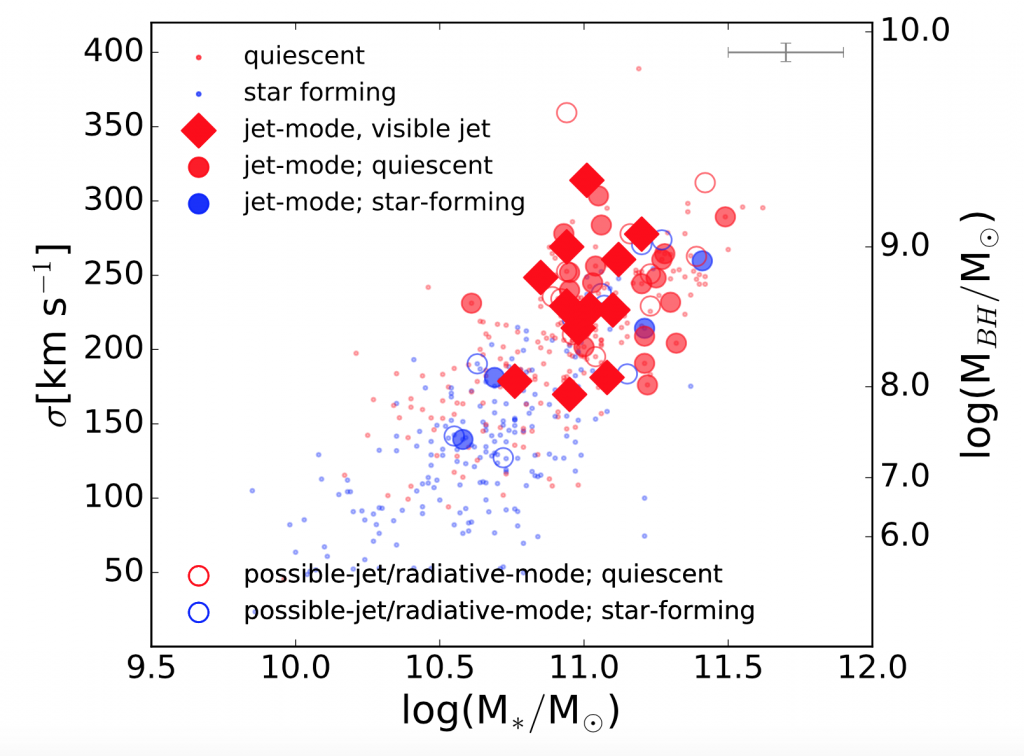Ivana Barišić, Arjen van der Wel and collaborators have charted out the dependence of radio AGN activity on galaxy velocity dispersion (a proxy for black hole mass), stellar mass and star formation using the ultra-deep LEGA-C spectroscopic dataset from VIMOS on the VLT coupled with new radio data from the VLA for the COSMOS field. We find that radio-loud AGN at redshift 1, when the Universe is a little less than half of its present age, occur almost exclusively in old galaxies with high velocity dispersions in excess of 175 km/s, corresponding to black hole masses above 100 million solar masses. At a fixed stellar mass the fraction of z~1 radio-loud AGN is 5 – 10 times higher than in the local universe, suggesting that quiescent, massive galaxies at z~1 switch on as radio AGN on average once every Gyr.

The relationship between star formation activity (colors – red is quiescent, blue is star forming), radio activity (radio AGN are large symbols), velocity dispersion (a proxy for black hole mass), and stellar mass at z~1 from the LEGA-C and a VLA 3GHz surveys in the COSMOS field. As is seen locally, quiescence at z~1 is associated with large black hole mass; furthermore, one sees evidence for radio loud AGN activity in those quiescent systems with large black holes. Such behavior is consistent with models in which radio maintenance-mode AGN feedback is a driver of quiescence in galaxies.
This paper extends to z~1 the evidence associating quiescence with large black hole mass discussed by Terrazas et al. (2016, 2017). Importantly, because of the deep radio data and increased duty cycle of radio AGN activity at z~1, there is a clear association between quiescence and radio activity -not only are galaxies with large black holes quiescent, but also one can directly see the radio AGN operating in a significant fraction of these systems. This paper was accepted for publication in the Astrophysical Journal.

